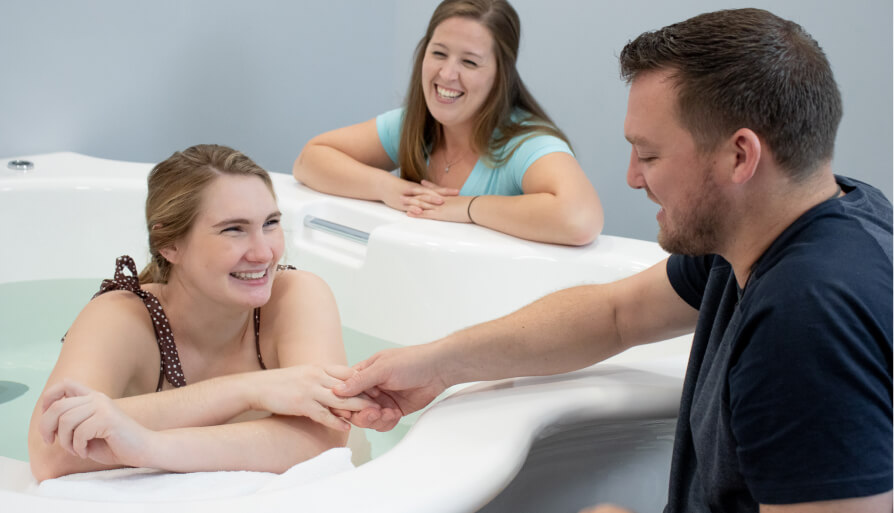As hospitals are held increasingly accountable for health outcomes and satisfaction of child- bearing families and the maternity care workforce shortage grows each year, it has never been more critical to reconfigure hospital staffing models. Of key importance is to understand and successfully integrate all available roles and providers into birthing facilities with them practicing to the full scope of their education, certification and licensure.
Decades of research and data from countries that spend far less on maternity care with better outcomes, demonstrate successful integration of Midwives. ACOG continues to endorse advancing Midwives in team-based models of care by providing the right provider, for the right patient at the right time.
Grow Midwives brings almost 100 years of combined experience integrating midwifery-led models as Chief Midwives and Service Directors in community-based, private practice and academic teaching centers.
Opening an accredited birth center would start with understanding what the American Association of Birth Centers (AABC) promotes as exemplary models of free-standing birth centers. Creating environments that emphasize family centered care for low risk maternity patients in an out-of-hospital birthing facility.
Alongside the AABC, is an accrediting body that is not affiliated with, but works in tandem to promote accreditation of freestanding birth centers, the Commission for Accreditation of Birth Centers (CABC).
Birth Centers can be owned and operated by midwives or physicians or hospitals. When you think about accrediting a birth center, again you need to go back to state regulations. About half the states in our country have state licensure regulations that are additional to an accreditation process. Some insurance companies are likely to mandate both state licensure and accreditation before reimbursing for a facility fee. Additionally, some states do not require accreditation of your birth center or have regulatory requirements.
Optimal safe practice is best provided by meeting minimum requirements of CABC accreditation. There is a cost associated with accreditation as with any oversight organization that provides recommendation of quality review. However, Grow Midwives believes this is the most rigorous process demonstrating public safety and accountability. We believe this is a requirement for safe care in all birthing facilities.
Creating a midwifery practice that offers planned home birth services necessitates wearing a variety of ‘hats’. You will need to be a midwife that is well versed in supporting physiological perinatal care. You will also need to be the creator and owner of a small business. In addition, it will be crucial to understand the regulatory and social environment for Community Birth in your area.
If starting a midwifery practice with Planned Home Birth Services, or if you are thinking of adding Planned Home Birth Services to you current practice, the following resources are essential: ACNM Home Birth Practice Manual, Birth in the Community Setting in NY State: NYSALM Guidelines for Best Practice. Also, Grow Midwives can help you to navigate the initial decision process, the set up and management of this endeavor.



Overall, women in America think the quality of maternity care is good. (According to Listening to Mothers III Key Findings) However, mothers are increasingly aware of media attention over the last twelve months highlighting the high rate of maternal death in the US. A rate higher than any other high-income country in the world, yet the US spends more money on maternity care than any other country and experiences worse outcomes. It is estimated 700 women die each year from childbirth-related events, and over 50,000 women per year experience a near miss event. Consumer awareness about this growing crisis should not scare women and families but activate those considering growing their family to learn about many issues that contribute to poor outcomes. Grow Midwives is committed to educating consumers to engage in their care, and make the best choices for their provider, place of birth, and engagement before, during and after childbirth. We are committed to education through free distribution of infographics and resources to guide learning. We are also nationally renowned speakers, willing to speak at venues that you believe could advance the role of safety, quality and improved outcomes in maternity care, particularly by scaling up midwifery.

This infographic is available under the CC BY-ND 4.0 License (full text).

This infographic is available under the CC BY-ND 4.0 License (full text).

This infographic is available under the CC BY-ND 4.0 License (full text).

This infographic is available under the CC BY-ND 4.0 License (full text).

This infographic is available under the CC BY-ND 4.0 License (full text).

This infographic is available under the CC BY-ND 4.0 License (full text).

This infographic is available under the CC BY-ND 4.0 License (full text).

This infographic is available under the CC BY-ND 4.0 License (full text).

This infographic is available under the CC BY-ND 4.0 License (full text).

This infographic is available under the CC BY-ND 4.0 License (full text).

This infographic is available under the CC BY-ND 4.0 License (full text).

This infographic is available under the CC BY-ND 4.0 License (full text).

This infographic is available under the CC BY-ND 4.0 License (full text).